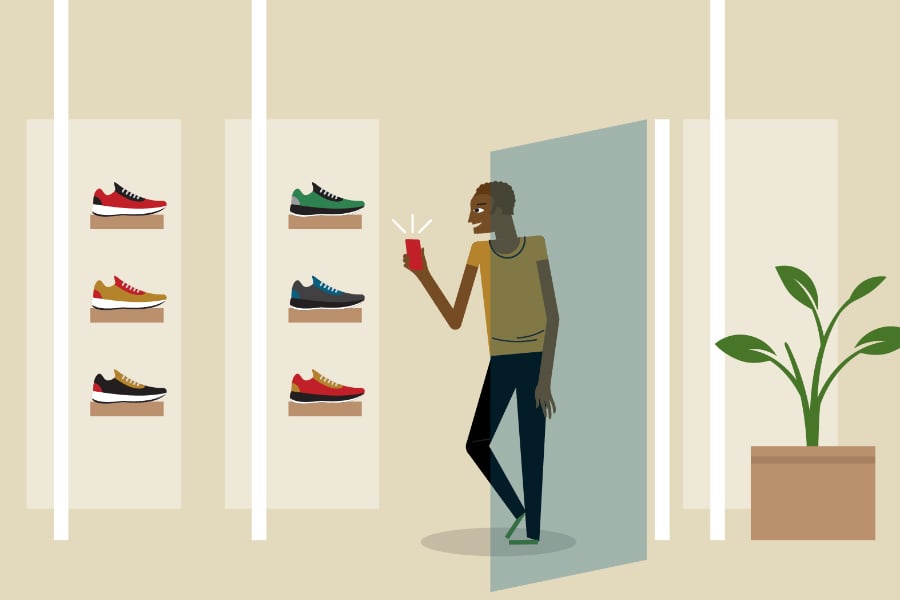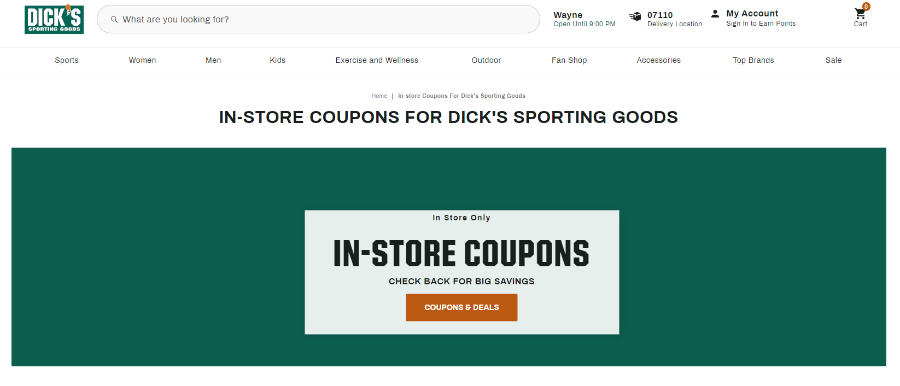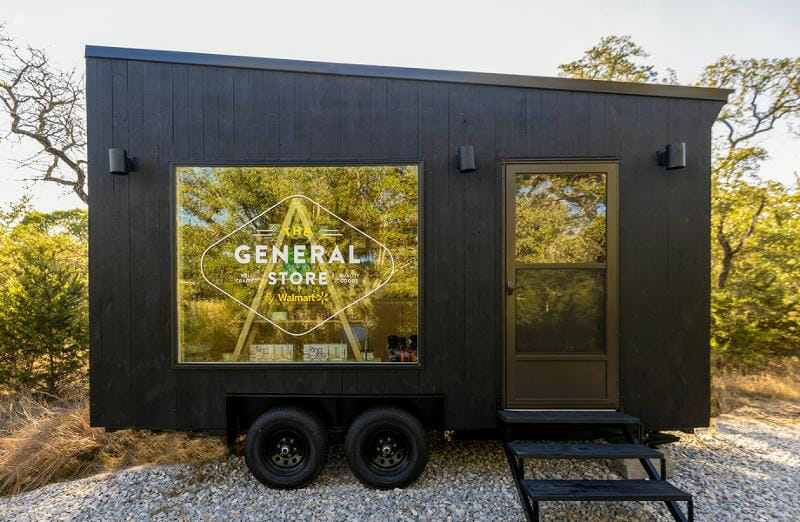Logistics
Industries
Technology & Innovations
E-commerce
E-commerce Fulfillment Services
Lease & Maintenance
Semi Trucks
Logistics
E-commerce
Lease & Maintenance
Buy Used Trucks

What do Breakfast at Tiffany's, Big, and Elf all have in common?
In-store shopping scenes. In-store shopping is one of those universally depicted experiences in film and media. For decades, entertainment has referenced exciting retail experiences. Why? Because it's extremely relevant. We've all had a memorable in-store experience at some point or another.
Interestingly enough, retail montages have dwindled in more recent entertainment. But, this doesn't mean that customers aren't still shopping in person. It may just not be living up to their standards.
The 2023 consumer knows exactly what they want from the shopping experience, be it digital or offline. Brick-and-mortar retailers who understand and cater to the expectations of a consumer who is online and offline will always come out on top.
In this blog, we're going to take a look at the current state of brick-and-mortar retail and how brands can improve their in-person customer experiences.
Let's dive in!
With the e-commerce boom and fiercely digital age that we're in, it's easy to neglect the in-store experience. But the reality is that consumers are still shopping in-store - even more so than they are shopping online. In fact, 40% of consumers make in-store purchases once a week, while only 27% make online purchases in the same timeframe.
It's important to note that while customers are shopping in person once again, they are behaving quite differently than they have in the past.
In 2023, consumers are walking around with small computers in their pockets - and they use them during their in-store shopping journeys. A study from Google found that 56% of shoppers research items via a smartphone while they were in a store. For brands, this means having a strong online presence is just as important as a physical store.
For many consumers, in-store shopping provides the convenience of walking away with a product in hand - nearly 80% of shoppers will go to a store if they want something immediately. When the customer can't wait (i.e. shopping for a last-minute outfit at a clothing store, or stocking up on food necessities for the week) in-store experiences trump online experiences simply because of instant gratification.
The verdict? In-store consumers want a frictionless, fast, technology-first experience - one that many retailers aren't living up to.
Perhaps one of the most frustrating experiences of shopping offline is having to wait in line. When brick-and-mortar retailers aren't staffed appropriately, there's a high chance that customers are spending a decent amount of time waiting to check out, try on clothing, or ask a store associate a question. This only creates negative in-store experiences that could deter customers from coming back.
What to do instead: Staff accordingly
With every store, there are bound to be certain peak hours depending on the day and season. Retailers should take this into account as they're building out their staff schedule. For example, a Saturday morning may require more store associates on hand than a Wednesday afternoon. Whatever the case, it's better to be overprepared than underprepared when it comes to enhancing the customer journey.
It's no secret that consumers are more cautious shoppers than they've been in the past few years. Between inflation rates and supply chain woes, consumers are either having a difficult time finding their favorite products at a reasonable price, or they simply can't find them at all. A survey from PWC found that 70% of in-store consumers cite rising prices as the greatest impact on positive vs. negative customer experiences.
What to do instead: Offer promo codes exclusive to in-store shoppers
Shoppers love discounts! But, of course, somebody has to front the cost of a lower price point. For brands, promo codes are a wonderful way to boost engagement and purchasing, but there's a fine line between smart discounting and dumb discounting. For example, keeping certain discounts only available to those in a physical store will boost the morale of your in-store shoppers without hurting your bottom line too much.

Dick's Sporting Goods features a page on their site where customers can see the types of in-store exclusive coupons available each day.
Currently, many customers aren't getting what they need from in-store employees. Over 40% of consumers identified a lack of helpfulness and unprofessional behavior as the most common problems store associates. Not only this, but more than one in three consumers stated that those who did help them did not have enough product knowledge - meaning, they didn't know where the products were located in the store or whether they were in stock.
What to do instead: Train associates on best practices
Store associates should always know how to locate products and determine whether they're available. Retailers need to pin this as a vital training point before associates can start helping on the ground. In addition to this best practice, employees should have extensive training in providing a top-tier customer experience. This means knowing how to de-escalate customer conflict, understanding how best to engage a shopper, and learning how to address customer needs.
The best thing about online stores? No checkout lines. In physical stores, there's typically no getting around it: even with enough staff, certain times are just so busy that there's no avoiding a long checkout. (Think: Target on a rainy Saturday morning.) While many customers factor lines into their allotted in-store shopping time, it can still be a pain point for consumers who want to move quickly through their shopping journey.
What to do instead: Offer self-service checkout
Big name retailers like Target and Walmart have already invested in self-service checkout as another option for in-store shoppers. For brands, self-service checkout machines mean reduced labor costs. For shoppers, it creates a smoother checkout with minimal contact, allowing them to choose their own experience while avoiding longer lines - a win/win!
In some ways, it's actually easier to have a personalized brand experience while online shopping. There are chatbots and product recommendations right in front of you. Your recent purchases/behavior is there for brands to take into consideration as they interact with you in a digital environment.
With in-person retail experiences, consumer data isn't floating around the aisles. Typically, there aren't associates providing product recommendations unless you seek them out. If a customer doesn't know exactly what they want and where to find it, they may have a less-than-average brand experience.
What to do instead: Allow customers to book sales appointments
Customers may not realize who your store associates are, or perhaps they're a little too shy to approach spontaneously. To combat this in-person friction, brands can offer one-on-one appointments with associates who have expertise in certain product areas.
For example, a mom purchasing a stroller may want to set up a time with a sales associate who can walk her through the different options the store has to offer. Allowing customers to book these types of 'appointments' gives them autonomy over their in-store experience, along with more human connection and a personalized approach.
Have you ever walked into a store and didn't get any sense of branding or direction? Products are sort of strewn about with no rhyme or reason. There's no signage to make finding inventory easy. This type of physical shopping experience only leads to confused customers and friction in the purchasing journey.
What to do instead: Differentiate with experiential shopping
Something as simple as better signage and curating relevant items in specific locations could create an entirely different experience for your customers. Take it up a notch and try adding more unique sections, like pop-up stores or stores within a store for different brands.
Alternatively, retailers may find doing a pop-up store outside of their typical location is more engaging for customers. Big-box retailer Walmart is experimenting with 'tiny' stores in their newest partnership with Getaway cabins. Essentially, they're curating outdoor products and putting them right where their outdoorsy customers will be.

There will always be customers who prefer to shop in person. Brands who aren't embracing this behavior with an omnichannel approach may be missing out on plenty of prospective customers who could easily turn into repeat customers.
Those embracing an omnichannel fulfillment strategy with brick-and-mortar stores will need to ensure the same level of experience no matter the channel: online vs. offline.
Why? Because the customer experience matters. A great in-store experience will lead to increased customer loyalty, word of mouth marketing, and a boost in sales. Pair it with a stellar online store experience and you've got an incredible number of happy customers!